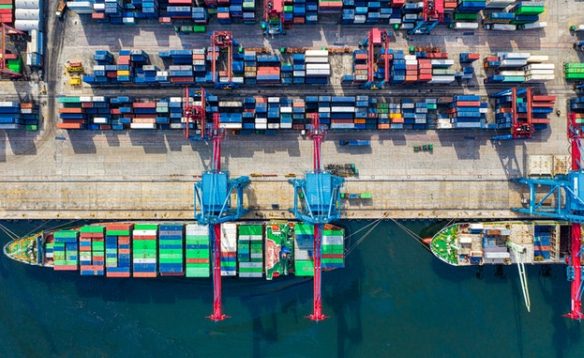-
With China’s early and sustained recovery, the $16-trillion global stimulus spending, and the pent-up demand, short-term economic trends appear supportive of shipping
-
Monthly seaborne trade basket was down by 12% year-on-year in May 2020, but down only 2% year-on-year in the fourth quarter, and up 1% year-on-year in the first quarter of 2021
-
The surge in container spot and charter rates since mid-2020 has been rapid and reached record highs
-
Global volumes in the first quarter of 2021 were up 47% year-on-year and 35% versus the first quarter of 2019
A year on from the peak impacts of Covid-19, seaborne trade has not just shown its resilience but has even mounted a rebound, with shipping volumes returning to pre-Covid-19 levels, according to a new report from Clarksons Research.
The latest “Covid-19: Shipping Impact Assessment” update released in May showed that seaborne trade fell 3.4% in 2020, although trade in tonne-miles was down by a more manageable 1.6%.
Global GDP fell 3.3% in 2020 but this does not capture the month to month complexities, regional variations and changes in consumer spending that have impacted and often supported shipping markets, said the update.
The report noted that with the early, strong and now sustained recovery in China, the $16 trillion in global stimulus spending (including $6 trillion in the US), and the pent-up demand, “short term economic trends now seem likely to be supportive for shipping, albeit with Covid-19 challenges and uncertainty remaining.”
The recovery in seaborne trade has been strong, and in some segments, exceptional, said Steve Gordon, managing director of Clarksons Research. “Our monthly seaborne trade basket was down by 12% y-o-y in May-20, but down only 2% y-o-y in Q4 and up 1% y-o-y in Q1-21.”
He added: “Our published trade projections suggest that we have now returned to pre-Covid trade levels, although with varying trends by sector,” noting that container shipping took only six months to recover from March 2020, making the sector the fastest group to bounce back.
Gordon said elements of “disruption upside” (e.g. logistical disruption including port congestion) have continued to make their impact, and while some of the disruptive support may ease later in the year, other trends are expected to remain supportive.
After a resilient 2020, the cross-sector ClarkSea Index—which shows the average earnings in dollar terms per day of the whole fleet—has had a very positive start to 2021, averaging US$18,385/day so far. This, noted the report, is the best start to a year since 2008 and up 54% on the ten-year average.
With the tanker market still weak, it has been the astonishing surge in containership charter rates to near-record levels and decade-high bulk carrier earnings that have underpinned this strength, with support from rebounding trade volumes and strong Chinese demand and activity, as well as logistical disruption including port congestion.
The surge in freight and charter markets for container shipping since mid-2020 has been astonishing, with spot box freight rates jumping to spectacular highs driving record liner company profits, and charter rates rising rapidly to amongst the highest levels ever recorded, the report said.
The strength has been driven by a “perfect storm” of a strong trade rebound and impacts from major logistical disruption (including box shortages and port congestion, and events at the Suez Canal), all against the backdrop of manageable supply growth.
Global volumes were back to pre-Covid levels in Autumn 2020, with growth on the trans-Pacific extremely strong. Volumes in the first quarter of 2021 were up 47% year-on-year and 35% versus the first quarter of 2019.
“Expectations are growing for a more prolonged period of impacts from disruption, with the short-term outlook very positive,” said the report.





